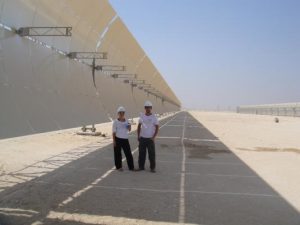
Feel you are reaching out to a forest of abyss? Even greentech companies like solar energy need good sales skills. Here’s how.
There are over 3.9 billion email users worldwide. And that means you can connect with pretty much any commercial solar lead through cold email.
But do you know that 25% of cold emails aren’t actually seen? Even more so, 47% of these emails are discarded. Now imagine gathering several quality solar leads and sending hundreds of emails each day, only for your response rate to be around the 2% mark. Not encouraging, right?
But don’t beat yourself up. Cold email campaigns are tricky and tough to break through. If you’re having a hard time driving sales or higher response rates, it’s about time you stopped spinning your wheels and reviewed your strategy.
For starters, how good are your CTA requests? Not so good, I presume? Many marketers pay more attention to the subject lines, the introduction, and the tone of their emails than the call to action requests. And this where they go off-script.
No matter how good your email looks or how well it is worded, if your call to action (CTA) doesn’t induce the action you desire, it has failed.
The call to action is the key to increasing reply rates. Think of CTAs as the trigger that induces a particular action that helps you achieve your pre-defined objective. For a call to action to bring the proposed result, you need to know how to form a persuasive request.
So, before you swear off cold emailing, take a look at these types of cold email requests. It might just be one of the ways you can be more successful with cold email outreach.
Not Specific Requests
This type of request is cliché, common, and generic. When it comes to cold emailing requests, most salespersons send their emails with non-specific requests.
Want to know what these requests look like? Here are a few examples.
“Let me know when you’re interested.”
“Contact me if you want this service.”
“What time is great for you to meet with me?”
“Please let me know when you would be ready to discuss this idea.”
The examples above aren’t specific. And aside from this, they sound lazy. It is just as though you can’t muster up the will to create a connection and want the recipient to do it.
Second, they also sound very unserious. If you want to drive sales, you’ll have to be a lot more specific than this.
Now, why do many marketers send emails with non-specific requests? Some do so because they think that specific requests come across as highly presumptuous, knowing that you are sending an unsolicited email request. So they choose to go the non-specific route.
On the contrary, non-specific requests elicit a much different response, and it isn’t a positive one. When you end a cold email with a non-specific request, you’re allowing the prospect to send your email to the spam folder. It strips the control of the narrative from you and gives it to the prospect.
Using the example above, a non-specific request would get the following responses.
-
Disinterest
When you send cold emails, you already run the risk of eliciting a negative response. However, the chances of that happening increase with non-specific requests. If they don’t sound exciting, interesting, or action-inducing, the reader will become uninterested.
-
Annoyance
Some prospects get annoyed by non-specific cold email requests. Here is someone emailing me out of the blue to get my patronage but doesn’t care enough to be specific about timing? No, I’ll pass. The bottom line is this; non-specific requests won’t get you the replies you want.
When it comes to commercial solar lead generation, the aim is to set up a meeting with a solar company to discuss business requirements and your services. In this instance, a CTA could look like this:
Can you talk on the phone for 20 minutes next week on Tuesday or Thursday afternoon?
Slightly Specific Requests
This type of request is a lot better than a non-specific request. It gives precise times and dates for follow-ups while also giving room for changes to the reader’s schedule.
With a slightly specific request, you’ll probably come off as someone who is invested in what you’re offering. This impression is influenced simply by giving a date and time.
Slightly specific requests also make the salesperson sound considerate. It is one thing to be confident, and it is another to be an arrogant, inconsiderate fellow. You don’t want the prospect to see you as the latter in any way.
Some examples of slightly specific responses include the following:
“Can we meet at the coffee house next to your office to discuss, or would you prefer to meet in your office?”
“Would 12noon work for a business call to further discuss this idea, or would you prefer to discuss it over dinner?
“Is it okay if we have an in-depth discussion at the gulf club on Saturday, or would you prefer to discuss it over drinks?
Why is a slightly specific request effective?
It ensures a response. With the option you give in your request, most prospects would feel obliged to answer you.
If you get a NO, that’s not a knock on you. It is still a great cause because you can go on to pursue other leads. If they aren’t okay with any of the options above, you can negotiate another time. Either way, you get a response, which is very important.
Very Specific Requests
Unlike slightly specific requests, very specific requests give the lead only one choice for a follow-up. It might seem inconsiderate and ballsy, but it is very effective.
In fact, it is more effective than all the other types of requests.
Here is what a very specific request sounds like:
“I’m free to discuss any questions you have about this product at 3 pm on Monday. Is this fine by you?”
“I’ll free up 20 minutes for a call on Tuesday by 11 am. Let me know if this works for you.”
In all examples, the marketer sounds confident, serious, and professional. These attributes often convince the lead to take the desired action.
Remember, don’t sound salesy and pushy. A commercial solar cold email is never intended to sell a product or service. It is meant to start a conversation and develop a background for interaction, which may result in your lead using your product or service.
Conclusion
No more than 25% of commercial solar cold emails are opened. And only a few of these prospects will respond. If you want to increase your response rate and ROI, eventually, you need to rethink how you conduct your CTA request.
Spend some time on subsequent commercial solar lead generation cold email campaigns to perfect your CTA. Although it may take more time to master, the outcome will be worth it.



